I’ve put a ton of different scopes on my 270 WIN rifles. It’s one of my favorite and most dependable hunting rifles in my cache.
I have my pet scopes for my Remington and Browning rifles and I’ve included them in this list as well as some other best scopes for the .270 that I think would be ideal.
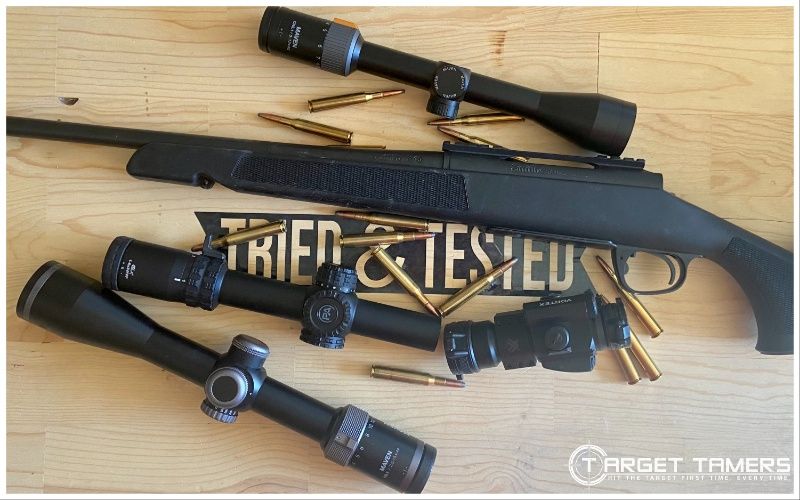
To provide a variety, I compare cost, reticles, accuracy, scope design and technologies, and more to help determine what should be mounted over your bolt.
As a bonus, I’ll reveal my personal, go-to scopes for my flat-shooting rifles!
Why Trust Us?
After hundreds of hours of hand-testing scopes in the field and at the range, and thousands more hours researching and writing about them, we feel we earn the title of experts when it comes to optics!
We purchase as many of the optics for our tests as possible, and run them through their paces to make sure they will perform at the range and in the field.
Our combined decades of experience from big game hunting (deer and elk) has been integral in putting together this round-up of the best scopes for 270 - one of our favorite flat-shooting hunting rifles!
Get the inside scoop on how we test optics here.
Best Scopes for 270 in 2024
1. Maven RS.1 2.5-15x44 – Best Overall
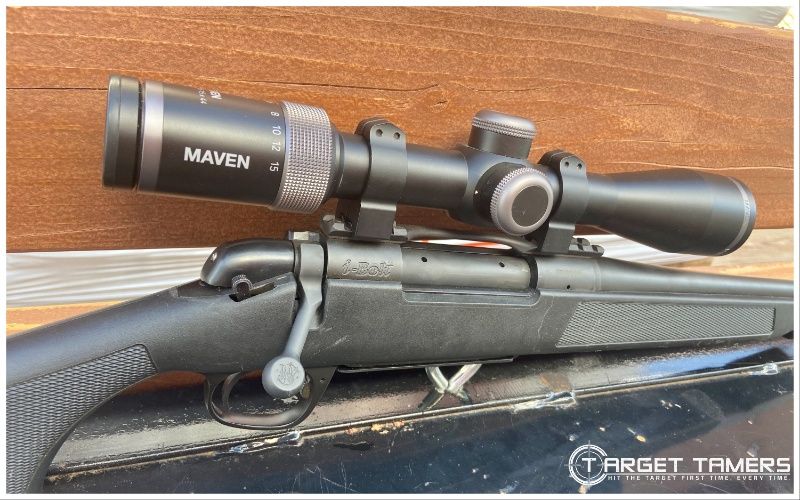
If I recall correctly, the RS.1 was Maven's first riflescope and our approval of it is still valid to date. Though the RS1.2 is a fantastic piece of work and adds a feature or two that I wanted to see on the RS.1, I still have a soft spot for the uncomplicated design of the original scope.
Pros:
- FFP reticle
- 6x zoom
- Excellent glass
- Accurate tracking
- Side focus
Cons:
- No illumination
In my opinion, the RS.1 is only lacking illumination which I like to have while in the hunt during those golden hours. However, the RS1.2 takes care of that if it’s a must-have for you. Everything else about the RS.1, I like.
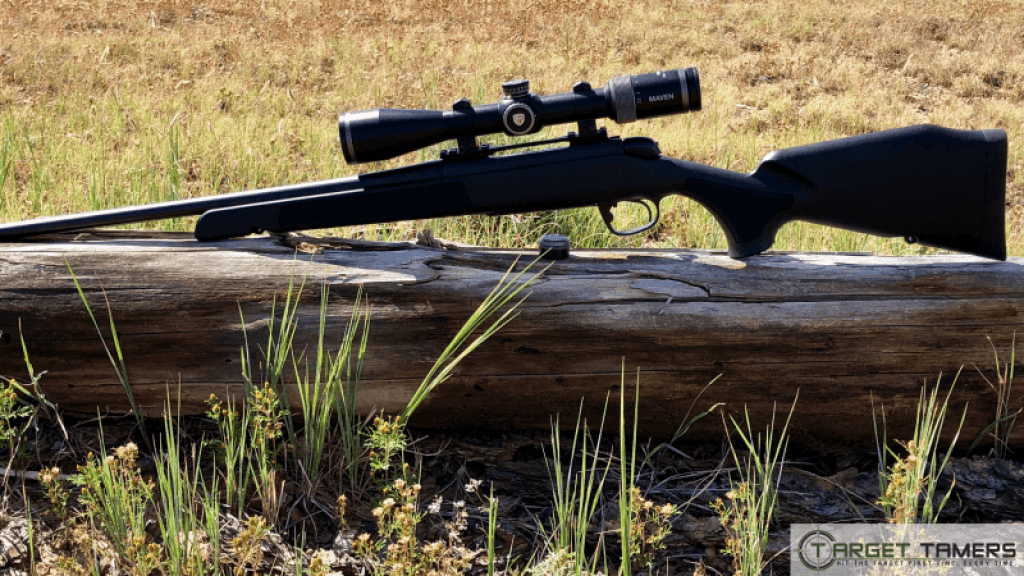
Target Tamers has the SHR reticle, so obviously there has been an improvement in the reticle design for the RS.1 where wind can be held over for. Available reticles for the RS.1 are the SHR-1 and the MOA-2, both of which are MOA reticles, glass-etched, and are in the FFP.
The turrets are grippy, crisp, and track accurately. Each adjustment is in 0.25 MOA with the elevation turret offering 100 MOA in total travel with the windage turret offering 70 MOA in travel. This is more than enough to get sighted in, take shots out to 400 yards on elk, and still further stretch the distance.
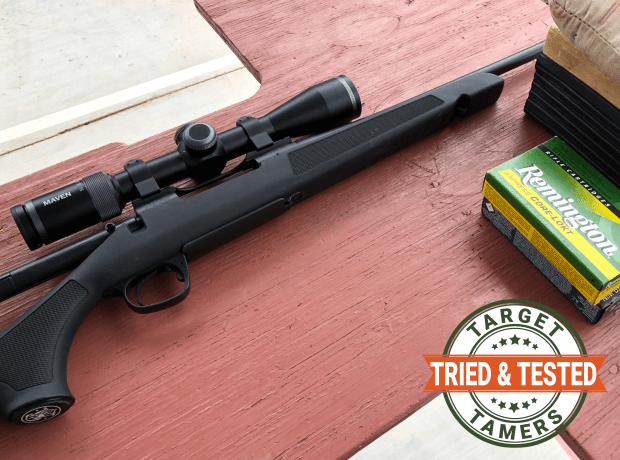
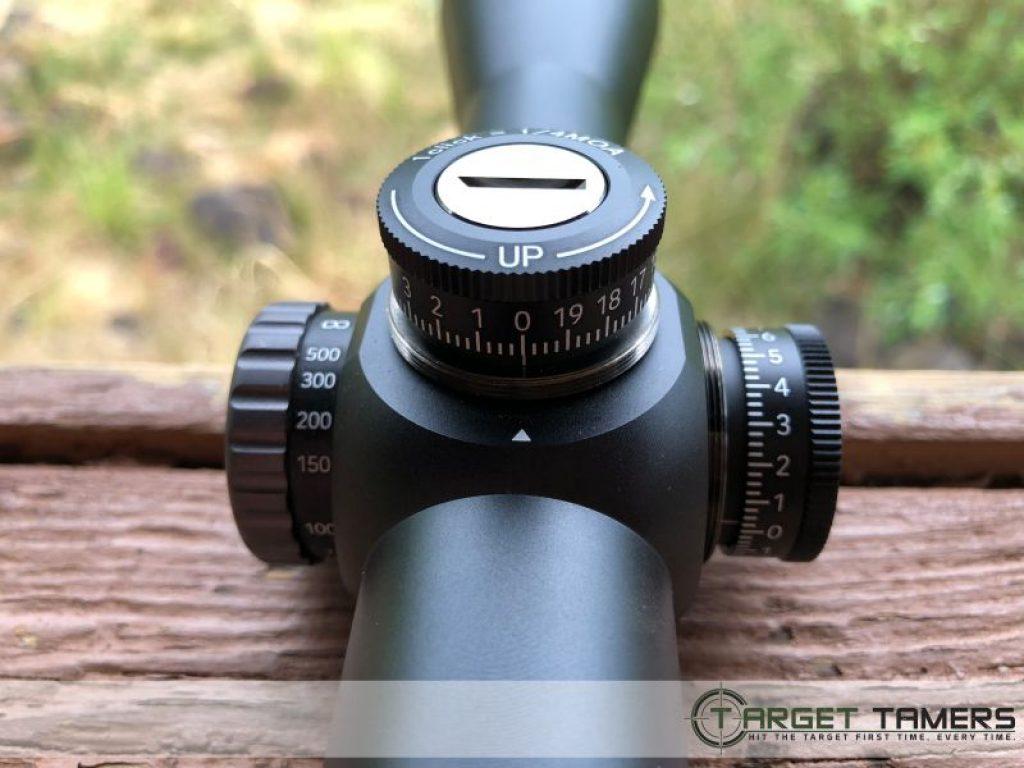
The optical quality is superb. It’s a premium riflescope with Japanese ED glass that gives it exceptionally clear and sharp resolution. With the side focus, you can dial down to as low as 10 yards.
The RS.1 is a high-quality riflescope for really any bolt action rifle. It’s heavy-duty, crystal clear, easy to use, accurate, and dependable. It’s why it’s a top favorite for my 270!
2. Maven CRS.1 3-12x40 – Best for Elk
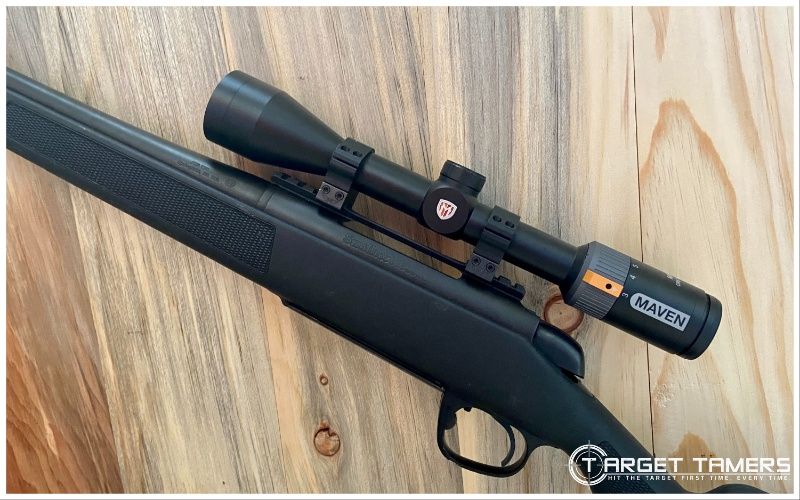
There was a time when the 3-9x40 was the standard hunting scope configuration. Now, I’d take a 3-12x over a 3-9x, and Maven delivers with the CRS.1 3-12x40 specifically made for hunters. Perfect on a 270, the CRS.1 is an essential tool if you want affordability and dependability for the next hunt.
Pros:
- Price
- C-series glass
- 4x zoom
- SFP reticle
- Accurate tracking
Cons:
- Not for long range
I only say that it’s not for long range because it has 50 MOA elevation adjustment travel and fixed parallax at 100 yards. You could probably get to 850 yards with this scope, but by then you’ve already lost over two thirds bullet velocity with a 150-grain load and used up all your elevation. Perhaps for a paper target you could push it, but for the bull or cow tag in the woods or mountain brush, the adjustment travel is plenty.
So, the CSHR reticle is not unlike the SHR reticle in the RS.1. It’s simple, easy to use, and easy to see. My holdovers for the 5, 10, and 20 MOA holdovers at 15x are 304, 456, and 702 yards. Though I’m not taking shots with a 20 MOA holdover, the 5 and 10 MOA holdovers have value.
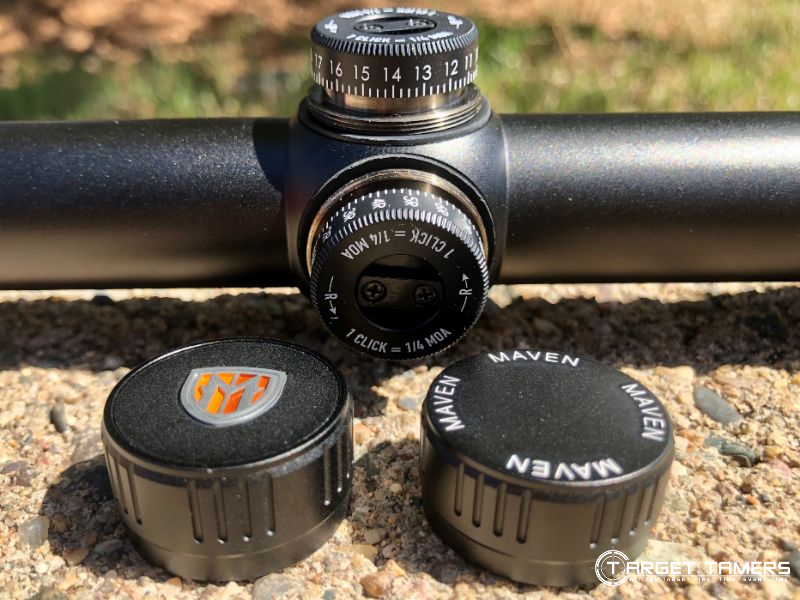
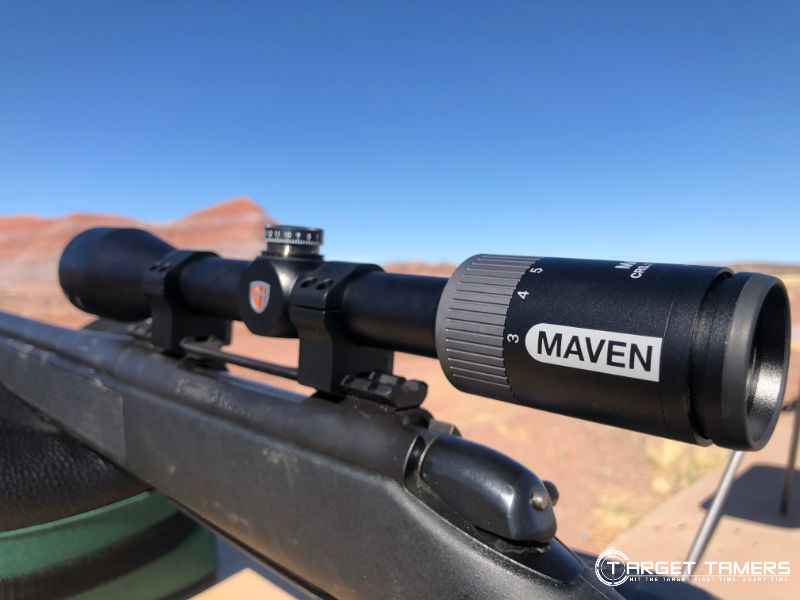
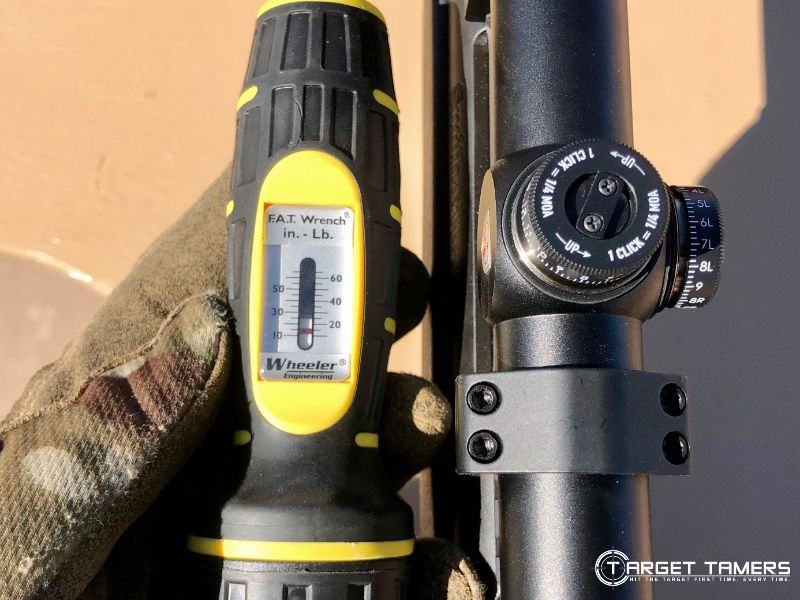
Though the optical quality isn’t the same as the B or S series optics, the C series glass is still fantastic. The CRS.1 is made in Japan, it has ED glass, and the scope is more than adequate for lowlight conditions.
The reticle is made from wire and is in the second focal plane, so it’s bold and highly visible. The CRS.1 scope is waterproof, fogproof, and tough. I’d trust this scope for a deer and elk hunt. It’s accurate, rugged, and uncomplicated. For those no-nonsense hunters, you know what I’m talking about.
3. Leupold VX-3HD 3.5-10x40 – Best for Deer Hunting
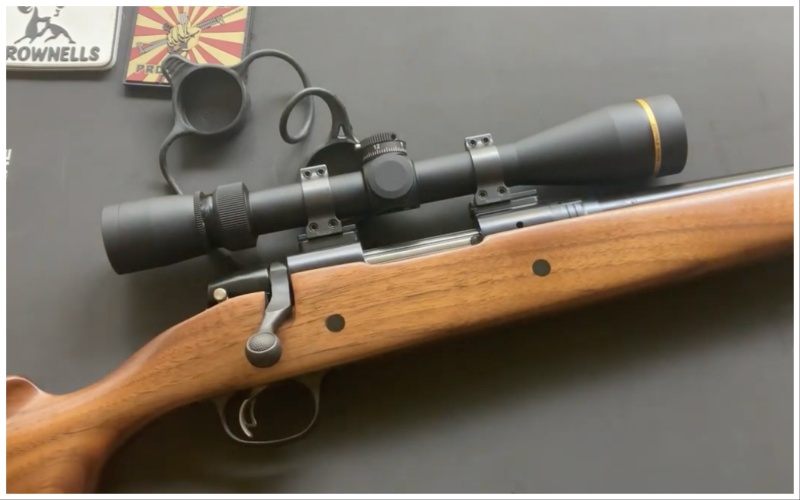
Leupold is a staple in many hunting households, and I personally know quite a few Leupold-only hunters. While you can spend around $2000 on a Leupold scope, I think a scope under $500 will serve the 270 well.
Pros:
- Low power range
- Exposed turret
- Zero lock dial
- Locking eyepiece
- HD optics
Cons:
- Not for long range
Like the Maven CRS.1 3-12x40 scope, the Leupold VX-3HD 3.5-10x40 is not intended for long range. Yes, you can dial it up for “long” shots with your 270, but you’ll still max out with 55 MOA in elevation adjustment travel.
But for taking down deer, most of us are doing that around 350 yards and less with the 270. The 3.5-10x configuration of the VX-3HD is perfect for this. With a duplex reticle in the SFP, it’s about all we need for the task.
Now the CDS-ZL Duplex model is non-illuminated and is what brings this scope under $500. If you’re willing to spend a little more, you can land the Illuminated Firedot Twilight Hunter reticle model. It has even thinner crosshairs with an illuminated dot at the center for fast target acquisition especially in low light.


What’s interesting about the VX-3HD is that its low magnification up to 10x combined with an exposed elevation turret, locking zero stop, and removable throw lever lends to LPVO features. However, you get more a brighter and clearer sight picture in low light thanks to the larger 40mm objective and 3.5x magnification on the low end. This is great for precision shots with a 270.
With fixed parallax at 150 yards, I’d say you’re dead-on for most deer hunting scenarios that you’d put yourself in with the 270 on your shoulder.
4. Vortex Diamondback SFP 4-12x40 – Best for Hunting
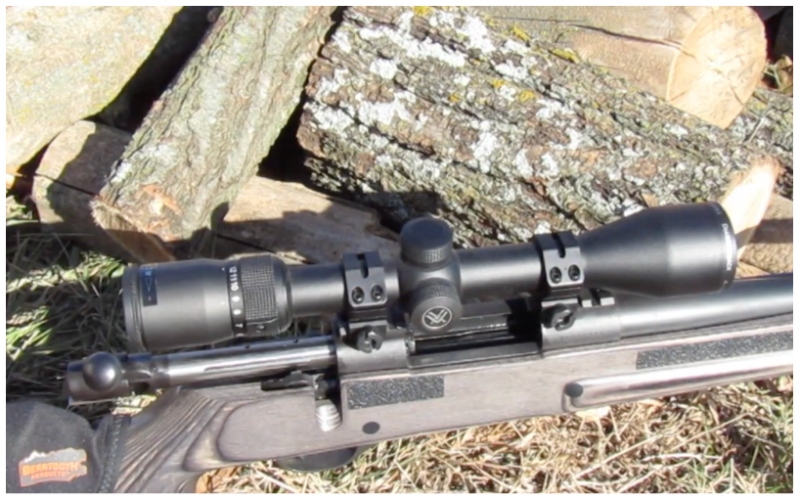
The Vortex Diamondback is one of the most well-known series of scopes for its affordability, quality, and performance. Often sought out for target shooting and hunting, the Diamondback scope’s track record reflects simplicity, durability, and accurate performance.
Pros:
- Price
- Dead-Hold BDC reticle
- Capped turrets
- 60 MOA adjustment travel
- Argon gas purged
Cons:
- Not illuminated
I really like illumination for lowlight conditions when hunting. It’s that added benefit of reticle visibility in first or last legal light when you’re trying to tag out, shadows seem alive, and every minute counts. Alas, the Diamondback scope with the Dead-Hold BDC reticle doesn’t have it.
However, the non-illuminated BDC reticle is still nice and highly visible. Given that it’s in the SFP, it doesn’t get smaller, and the thick posts are about .6 MOA that draws your eye to the center crosshairs. You have wind and drop holdovers so that you don’t have to dial in. Since the turrets are capped, I like that the adjustments won’t be unintentionally changed when moving through brush and scrub and everything else.


There’s plenty of adjustment too if you want to stretch the distance a little further but keep in mind that the parallax is fixed for 100 yards. At max 12x magnification, the eye box may get a bit finicky to stay inside, but with 3.1” of eye relief, it’ll more than do for the 270.
I think what’s great about the Diamondback scope is that it’s just the right price for what most of us are willing to pay. It has decent optics, you sight it in and cap the turrets (set it and forget it), and you know what your loads do with each holdover. Its straightforward design is a primary reason the Diamondback lands itself in the hands of hunters.
5. Burris Fullfield IV 2.5-10x42 – Best Under $200
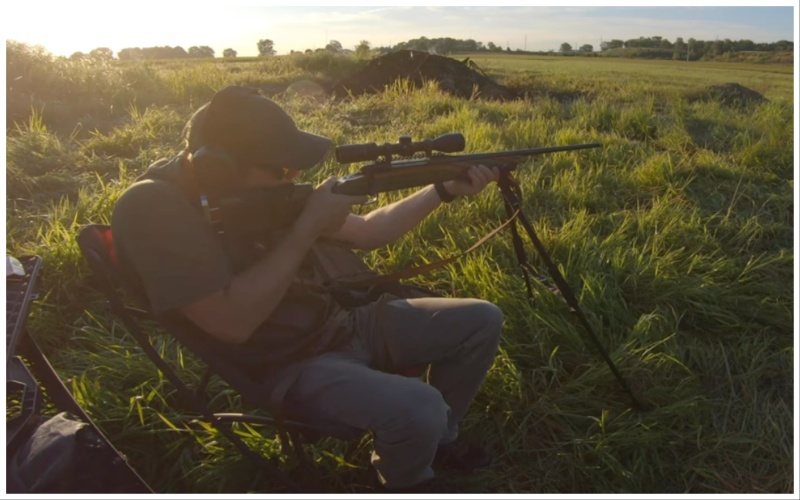
There are a few scopes under $200 that will do just fine on a 270. One of my favorites to recommend would be the Vortex Crossfire II 2-7x32. It’s cheap, has the Dead-Hold BDC reticle, and good enough glass. Yet, the Burris Fullfield IV 2.5-10x42 earned its way in this line-up over the Crossfire.
Pros:
- Price
- 4x zoom
- 42mm objective
- Illuminated reticle option
- Long eye relief
Cons:
- Heavy
One of the first things I noticed about the Fullfiled IV is its 42mm objective lens diameter that is slightly larger than the 40mm I see on alternatives. Though bigger and adding a touch to overall weight, it can allow for more light transmission. Given that the scope has Burris’ premium multi-coated lens coatings, I’d say the larger size is worth it.
The scope weighs in at just over 1 lb even with its low power. The illuminated reticle model weighs 18.4 oz. Personally, I’d go with the Illuminated Ballistic E3 reticle because having the lit-up floating cross as the aiming point can make all the difference in low light, against shaded targets, and for fast target and reticle acquisition.


The Fullfield IV also has a ton of adjustment travel with 80 MOA to stretch the distance. Though most of it will go unused on a 270 (probably), the ability to dial in if needed is there. For my loads and a 100-yard zero, this would mean any distance beyond 336 yards.
I consider the 3.8-3.5” eye relief long and plenty for the kick of a bolt action chambered for a .270 Winchester round. It can handle recoil from air rifle and slug guns too if your .270 is willing to share the Fullfiled IV scope around. Backed by the Burris Forever Warranty, why not try it out with slugs? There’s no way you can miss intruders and other game within range of the Fullfield IV.
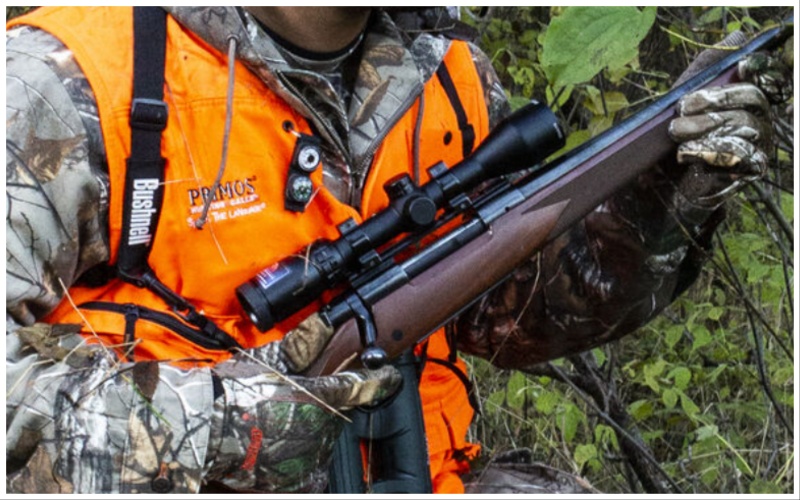
Riflescopes under $100 can be hit and miss, but the Bushnell Banner 3-9x40 scope is a hit. It’s priced cheaply, has the classic 3-9x configuration, and extended eye relief.
Pros:
- Price
- Multi-X reticle
- Lightweight
- Argon-purged
- Long eye relief
Cons:
- Entry-level
The Banner is what I would categorize as a long eye relief scope. The 6” of eye relief may not work for everyone’s 270. I think it might be a bit too long for me. But I can think of another hunting bolt action I have where that would be great since I find the stock a little long for my taste.
With that said, the Bushnell Banner is a budget scope and of course you can always spend more if you want “more” out of it. However, for range use and some hunting, the Banner should perform adequately.


It has the Multi-X crosshair reticle – easy and simple. It’s a non-illuminated reticle located in the second focal plane, so it’s bold and visible and remains the same size from 3x power to max 9x. Though it’s a cheap scope, you still have multi-coated optics, a fast focus eyepiece, and 0.25 MOA finger adjustable turrets.
The Banner is fixed for parallax at 100 yards, and I like that it’s ultra-lightweight at only 13 oz. Though it’s argon-purged for fogproof benefits, I wouldn’t say it’s waterproof but instead water-resistant. With an IPX4 rating, it can handle a little rain, but don’t let it get drenched. This has happened to me before with a Bushnell red dot, definitely my fault, but all the same, lessons learned.
For the money, the Banner has pleased a huge crowd of hunters. It’s worth the coin if you’re looking to spend as little as possible.
7. Primary Arms GLx 1-6x24 FFP – Best LPVO for 270
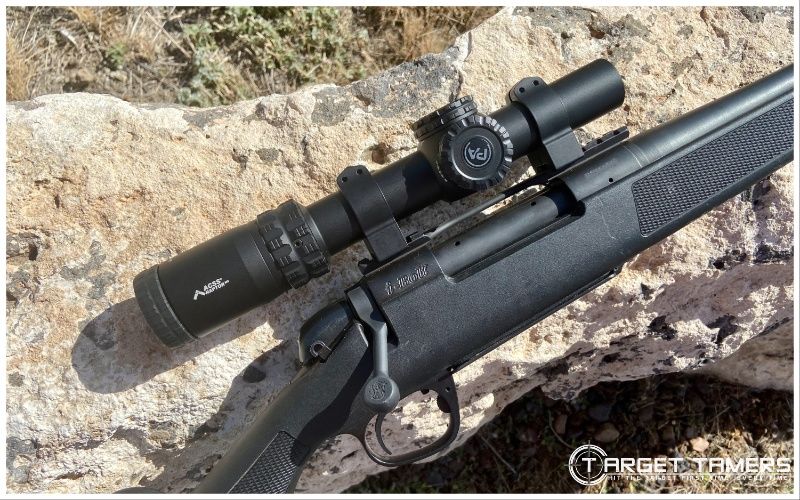
Though LPVO scopes are largely associated with MSR type rifles, they’re pretty good on a bolt action too – with the right mounting system. The Primary Arms GLx is one of my favorite LPV scopes to date for many reasons. Here’s why I think it’s great for the 270.
Pros:
- MIL scope
- FFP reticle
- Illumination
- ACSS Raptor M6 reticle
- Long eye relief
Cons:
- Heavy
LPVO scopes are heavy – it’s the way it is, so add about another 20 oz to your rifle and rings and you’ve got a solid rig to haul out in the field. If weight is a non-issue, then by all means, consider an LPV scope for your bolt action.
The Primary Arms GLx scope has a tried-and-true reticle that I love, the ACSS Raptor M6. Though it’s in the FFP, it’s still large enough to see the ring and chevron at 1x. The illumination is dimmer than what I’d like in daylight conditions, but come dusk and dawn, it’s perfect.
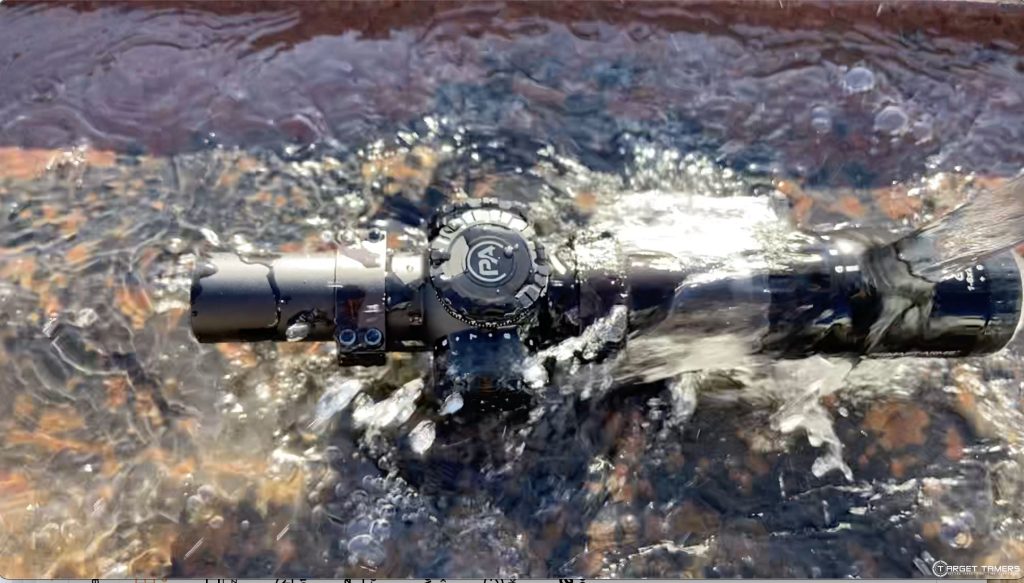
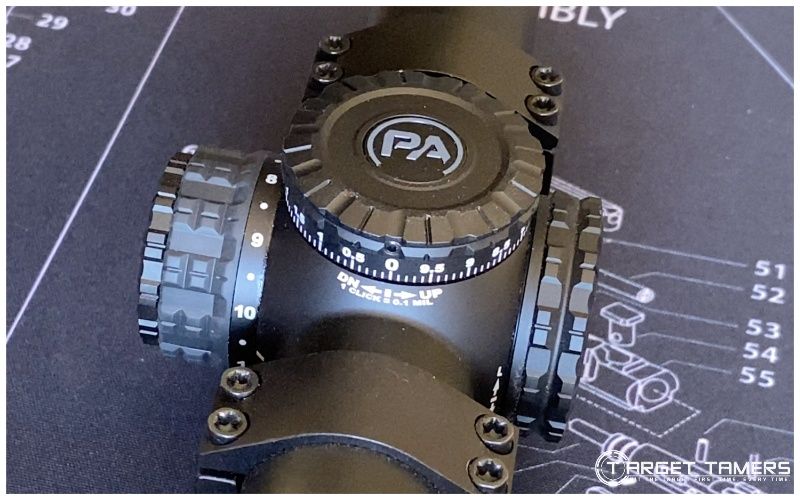
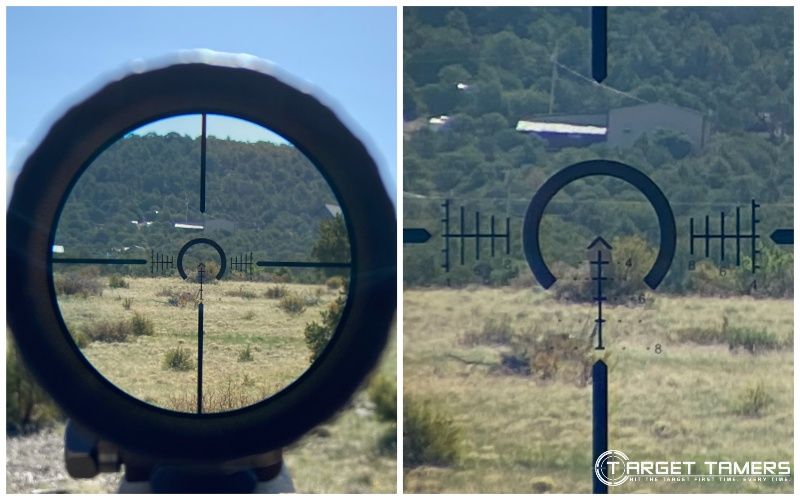
The BDC portion proves accurate for auto-ranging and holdovers. With my 270, I can pretty much get out to 566 yards though I’m a “get closer” kind of person with that kind of distance.
While most scopes offer adjustments and reticles in MOA, the GLx scope offers MILs. It also comes with an exposed turret as an accessory in the box. Complete with an interchangeable throw lever system, it obviously worked perfectly on my AR-15. But with about 4” plus some of eye relief (in my opinion), it was very nice on my 270.
For timber, dangerous game, mountain brush – this could prove to be a powerful combo for the hunt.
8. Vortex Strikefire II – Best Red Dot Scope for 270
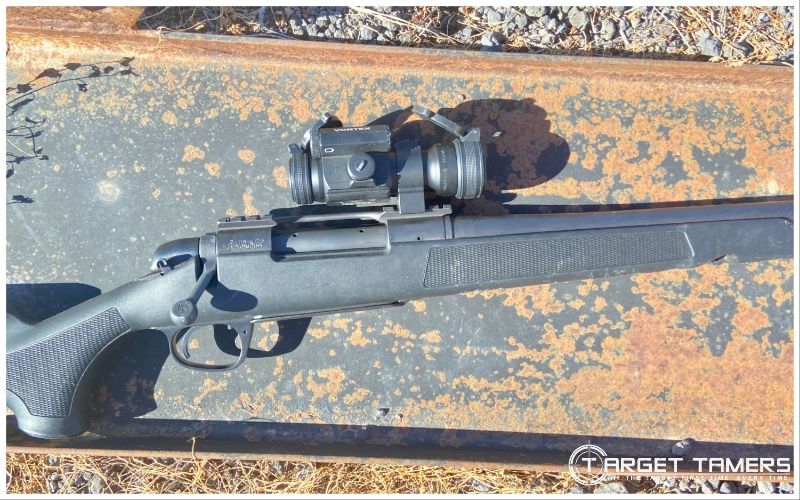
It might look unconventional on a bolt action rifle, but it works – actually it more than works! For those close-range shots, even up to 150 yards, the Vortex Strikefire II is a proven and dependable red dot sight to have on a bolt action hunting rifle.
Pros:
- Price
- 4 MOA dot
- Dual illumination
- Button control
- 30mm tube
Cons:
- Battery type
I think its brilliant that Vortex gave this red dot sight a 30 mm tube. Yes, the one-ring cantilever mount is pre-installed and is perfect for the flat-top rifle like an AR-15 (mine lives on a M&P 15/22), but that mount can be removed.
I opted for a single 30mm medium height ring to bring it in line with my weld on a bolt action rifle with a slightly angled stock that’s lower than the receiver. It might look a little odd sitting on there, but it’s not out of its comfort realm. The Strikefire II can handle the recoil, and it gives you the benefits of using two eyes open for maximum situational awareness.
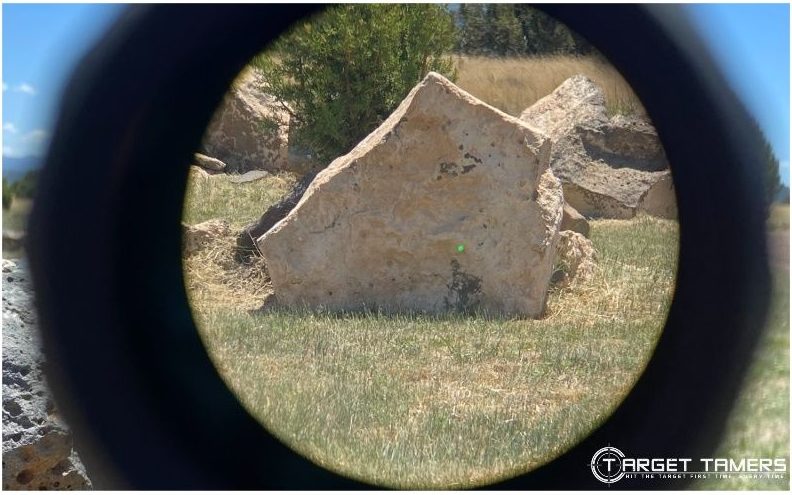

The 4 MOA dot covers up 4” at 100 yards. You can change the illumination between green and red though I recommend zeroing with one color and sticking with it. The button control is intuitive, but you will need to be intentional about hitting the center of the buttons to effectively engage it.
The Strikefire II takes a CR2 battery, and those I never seem to have on hand. I am always getting them mixed up with my CR123 batteries, and those don’t fit! Anyways, this red dot sight is what I call a continuous-on red dot. It doesn’t automatically shut itself off after a period of time and I like that. You do need to manually power it down to conserve maximum battery runtime.
In all, mounting the Strikefire 2 to a 270 rifle isn’t out of the realm of possibility. It’s doable and I don’t see why you couldn’t use this setup at the target range or for any game that dares come close enough.
9. ATN X-Sight 4K Pro 5-20x – Best Night Vision Scope for 270
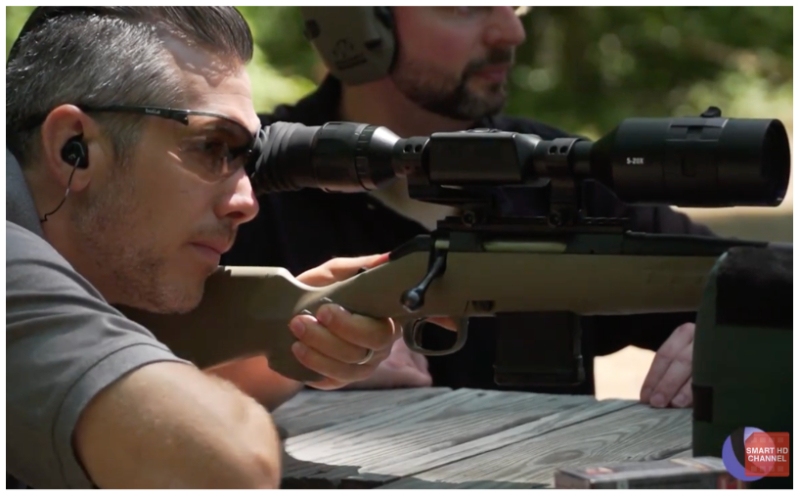
For nighttime hunting or home property defense, the best kind of optic you can get for your 270 is a night vision scope. One that looks like a scope, mounts like a scope, and acts like a scope is the ATN X-Sight 4K Pro. Since it’s digital, it can stay on the rifle during the daytime too.
Pros:
- Digital night vision
- Long battery life
- Adjustable mil-dot reticle
- Integrated rangefinder
- Video record & stream
Cons:
- Tech issues
The X-Sight 4K Pro is a standalone scope, so you don’t need anything else to get shooting with it at night. No, you can’t combine it with your daytime scope as a standalone scope is designed to be the primary aiming system. With digital technology, you won’t need a daytime scope anyway.
I would say the hardest part about having digital NV are the tech issues from learning the system through to dealing with any firmware bugs. ATN does release updates to fix these issues, but the learning curve must start and end with you. It takes time to navigate these things before you can get shooting.
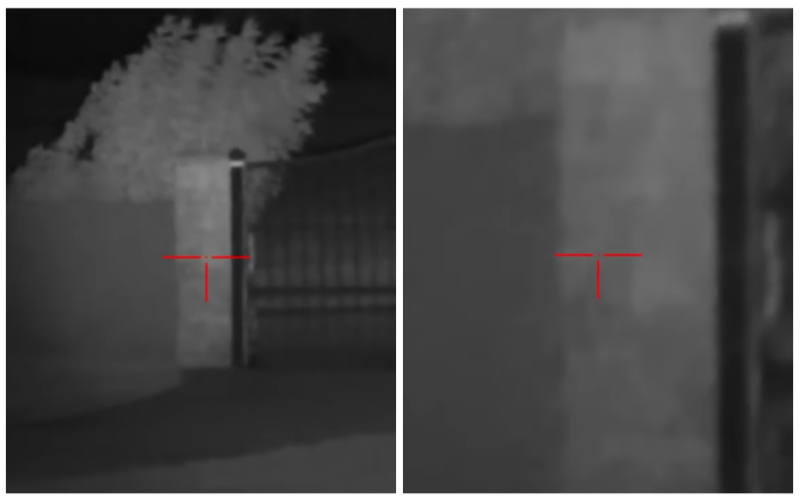
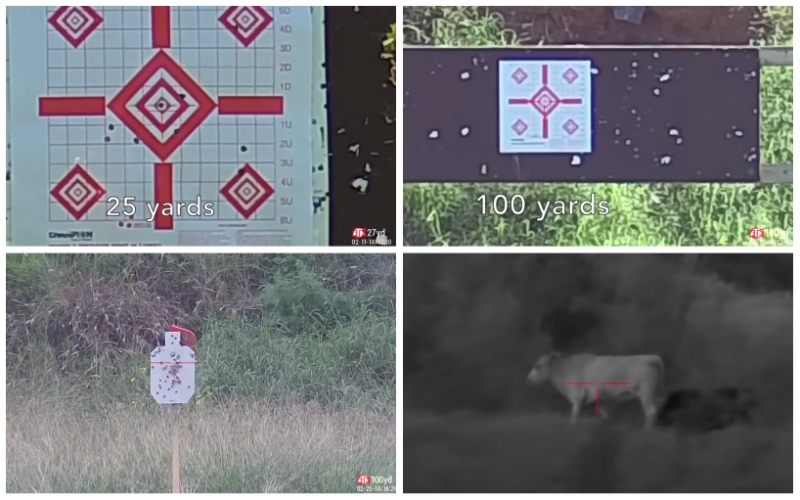
Once you’ve got a handle on it and how to digitally zero the scope, you can use the digital magnification to zoom in. It does get grainy at max power, so you will lose resolution, but I’d say that you’d definitely get great results inside 100-150 yards at nighttime on small targets like pests and predators.
With its 30mm tube, you can mount it to your 270 with 30mm rings. The ones that are included in the box could work, but also consider ring height appropriate for the bolt action rifle. What about eye relief? With 3.5” of eye relief, it couldn’t be more ideal.
As a benefit of a digital system, you can use its built-in features like video recording and the rangefinder. You can also download the app and take advantage of more features there. With 18 hours on one battery charge, there’s plenty of time to get out at night and maintain vigilance.
10. AGM Rattler TS25-256 – Best Thermal Scope for 270
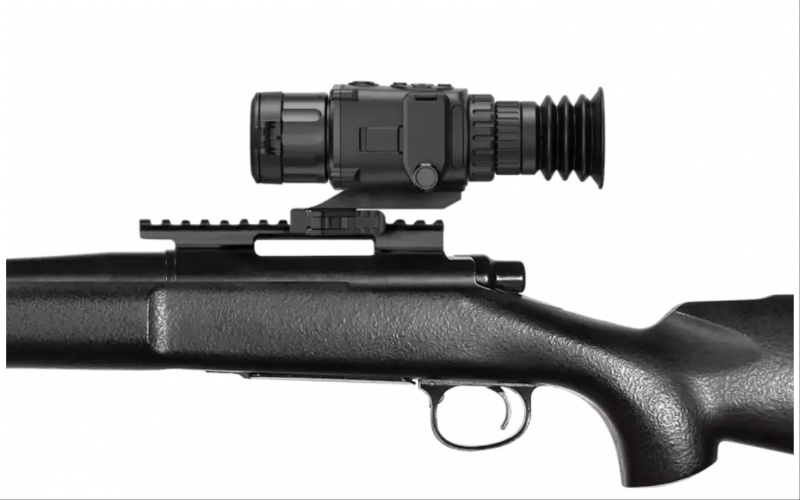
What could be better than night vision? Thermal! The AGM Rattler TS25-256 is a popular thermal imaging scope that’s priced right around what people want to spend. The Rattler is more of an honorable mention given its popularity as an affordable thermal riflescope.
Pros:
- Thermal imaging
- 256x192 resolution
- 4 palette modes
- Quick release mount
- Long detection range
Cons:
- Battery life
- Eye relief
The Rattler has 3.5x optical magnification with up to 28x max digital magnification. It has a fantastic 1250-yard detection range of a 6-foot target, but I’d say realistically to cut that in half for recognition and half again for identification. It also has a 25mm lens system that is obviously bigger than the 19mm model and is why I suspect it’s a hit over the latter.
With Black Hot, White Hot, Red Hot, and Fusion palette modes, 5 reticles, 3 reticle colors, PIP mode, Hot Spot, video recording and more, it’s no wonder that the 2x CR123 batteries only run for 4.5 hours. An external battery pack would take care of operating runtime but that’s a separate and optional purchase.


The Rattler would be excellent for some hog hunting or property defense. A mounting adapter of some kind may be needed to get the Rattler rearward enough to get within the eyebox. This brings up the issue of eye relief.
Though the thermal scope is rated to handle recoil up to .308, the eye relief is listed at 1.77” and that’s a really tight fit for a .270… However, there’s always those out there that know position, stock shape, butt pad angle, overall rig weight, recoil control, etc. that can make that work. If you’re one of them, this might not scare you. If you’re more like me, the Rattler might be geared towards the AR-15 instead.
A Guide to Choosing the Best Scope for 270
Cost & Special Features
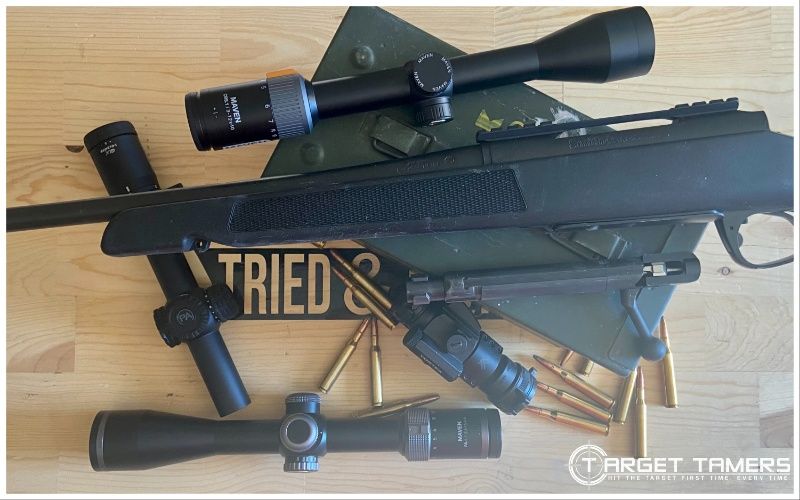
In general, riflescopes vary greatly in cost due to the materials and components used. The craftsmanship and expertise put into the scope and any additional technologies or special features affect value. Some of the best scopes for a 270 will cost more than mediocre scopes.
Some of the top scopes that could be recommended for the 270 are considered high-end and can be upwards of $2000. However, some of the most popular scopes for hunting bolt action rifles tend to be under $1000.
You can spend as much as you want on a scope for this flat shooting caliber, but it’s pretty true that you get what you pay for when it comes to optics.
| Product | Award | Price Range | Features |
|---|---|---|---|
| Maven RS.1 | Best Overall | Under $1000 | Premium glass, FFP reticle, Suitable for long-range |
| Maven CRS.1 | Best for Elk | Under $500 | ED glass, Made in Japan, Repeatable tracking, Mid-range quality, Wire SFP reticle |
| Leupold VX-3HD | Best for Deer | Under $500 | Exposed elevation turret, Locking zero stop, Throw lever, Illuminated reticle option |
| Vortex Diamondback SFP | Best for Hunting | Under $300 | SFP reticle, Argon-purged, Good glass, Capped turrets, BDC reticle |
| Burris Fullfield IV | Best Under $200 | Under $200 | Good eye relief, 42mm objective, Quality optics, Illuminated reticle option, Recoilproof |
| Bushnell Banner | Best Under $100 | Under $100 | Budget scope, Finger-adjustable turrets, Lightweight, Argon-purged, Duplex reticle |
| Primary Arms GLx LPVO | Best LPVO for 270 | Under $600 | LPVO scope, MIL adjustments, Great optics, Throw lever, ACSS reticle, Illumination |
| Vortex Strikefire II | Best Red Dot Scope for 270 | Under $200 | Dual illumination, 4 MOA dot, Waterproof, Fogproof, 30mm tube, Button illumination, Continuous-on RDS |
| ATN X-Sight 4K Pro | Best Night Vision Scope for 270 | Under $800 | Digital night vision, 30mm tube, Safe for daytime use, Recoilproof, Long battery life |
| AGM Rattler TS25-256 | Best Thermal Scope for 270 | Under $1300 | Thermal imaging, Standalone thermal scope, Multiple palettes, 3x reticles, Picture-in-Picture mode, Video recording, Recoilproof up to .308 WIN |
Glass & Light Transmission

The glass has a lot to do with how bright, clear, and resolvable the sight picture is. Though there’s skepticism about ED glass and special coatings, there’s physics behind it. The benefits can be obvious and is why a scope may cost more than a non-ED scope.
By the time light reaches your eye, there’s already some significant light loss. To reduce the loss, special coatings are needed, and this too can affect overall cost of a scope.
But glass and coatings don’t contribute to sight picture quality alone. The configuration, that is the magnification and objective lens size, can also aid or inhibit image quality and brightness.
Smaller objective lenses tend to have a slightly darker image with some contrast and color loss especially so when magnification is increased. For the 270 in hunting environments, generally a larger objective is desired to improve brightness and resolution as much as possible particularly need in lowlight conditions.
| Product | Magnification | Objective Lens Diameter | Glass Type |
|---|---|---|---|
| Maven RS.1 | 2.5-15x | 44mm | ED glass |
| Maven CRS.1 | 3-12x | 40mm | ED glass |
| Leupold VX-3HD | 3.5-10x | 40mm | HD glass |
| Vortex Diamondback SFP | 4-12x | 40mm | Non-ED glass |
| Burris Fullfield IV | 2.5-10x | 42mm | Non-ED glass |
| Bushnell Banner | 3-9x | 40mm | Non-ED glass |
| Primary Arms GLx LPVO | 1-6x | 24mm | ED glass |
| Vortex Strikefire II | 1x | 30mm | Non-ED glass |
| ATN X-Sight 4K Pro | 5-20x | 70mm | Non-ED glass |
| AGM Rattler TS25-256 | 3.5x | Unknown | Non-ED glass |
Eye Relief & Field of View
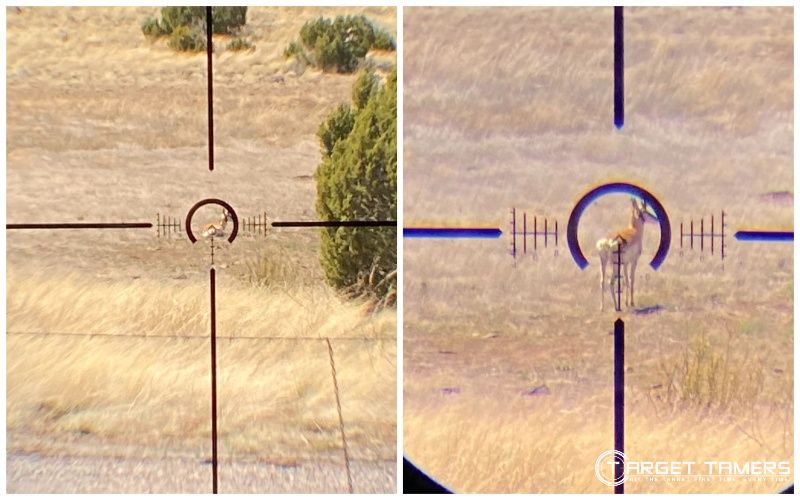
The .270 WIN is a popular and effective hunting cartridge, and it’s likely that your rifle is intended for the field, timber, mountains, and anywhere you get that hunting tag this year. With that info a wide field of view will help to easily track moving targets, and if needed, make follow-up shots.
The field of view will vary between scopes even those with the same configuration. The FOV will narrow as you increase magnification helping to home in on the kill zone.
Another spec that is need-to-know is the eye relief. Some say the 270 doesn’t have too much kick but I’d say it has enough to make me consider one day getting a 6.5 Creedmoor – just thinking out loud. Either way, I’d say you’d need at least 3” of eye relief for the recoil energy it produces. I can handle my 270s well and I can work with 2” but of course a little bit more eye relief is always welcome.
Now parallax really isn’t going to be too much of a concern for scopes with fixed parallax set at around 100 yards for the 270 yardages that one is most likely to hunt at. Besides, a consistent weld down the center of the optical plane will take care of that.
| Product | Eye Relief | Field of View (@ 100 yards) | Parallax |
|---|---|---|---|
| Maven RS.1 | 3.9-3.4” | 41.7-7 ft | Side focus |
| Maven CRS.1 | 3.2-2” | 34-8.5 ft | Fixed 100 yards |
| Leupold VX-3HD | 4.4-3.6” | 29-11 ft | Fixed 150 yards |
| Vortex Diamondback SFP | 3.1” | 32.4-11.3 ft | Fixed 100 yards |
| Burris Fullfield IV | 3.8-3.5” | 46-11 ft | Fixed 100 yards |
| Bushnell Banner | 6” | 32-11 ft | Fixed 100 yards |
| Primary Arms GLx LPVO | 3.5-3.3” | 104.7-18.3 ft | Fixed 100 yards |
| Vortex Strikefire II | Unlimited | Unlimited | Parallax free |
| ATN X-Sight 4K Pro | 3.5” | 240 ft @ 1000 yards | Unknown |
| AGM Rattler TS25-256 | 1.77” | 7-5.3° | Unknown |
Reticles
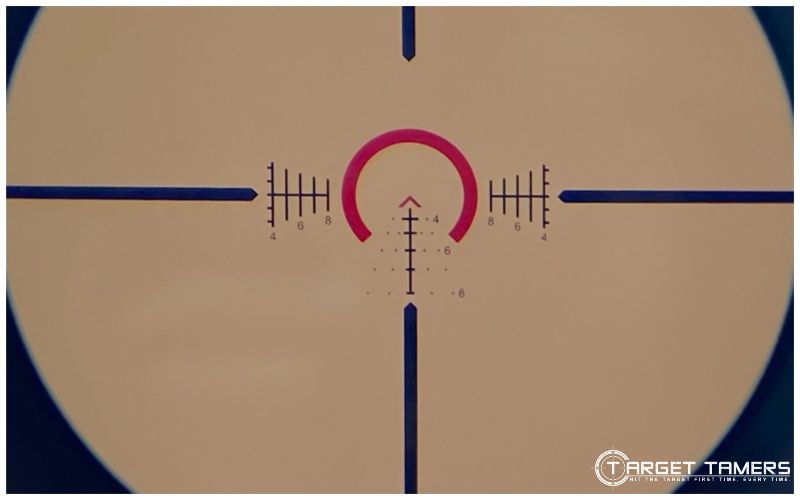
On average, most hunting shots with the 270 WIN are inside 500 yards. Simple, non-distracting reticles that do not clutter the FOV are must-haves. While many do just fine with duplex reticles, there are some easy-to-use BDC reticles that can offer just a little bit more versatility.
If you hardly ever hold over, then the duplex style reticle is the simplest and fastest reticle option for you. With SFP BDC reticles, you can always hold over but you’ll be forced to sit at max magnification. This isn’t a negative because for the effective hunting range of the 270 because these scope configurations are designed for usability in the field without slowing you down.
While I like and prefer FFP reticles, it can get small at 1x, but I’m usually sitting at a pet magnification range I like anyway. When it comes to illumination, I like to have it even if I don’t use it all the time!
| Product | Reticle | Reticle Type | Focal Plane | Illumination |
|---|---|---|---|---|
| Maven RS.1 | SHR-1 & MOA-2 | BDC | FFP | No |
| Maven CRS.1 | CSHR | BDC | SFP | No |
| Leupold VX-3HD | Duplex | Duplex | SFP | No |
| Vortex Diamondback SFP | Dead-Hold BDC | BDC | SFP | No |
| Burris Fullfield IV | Plex & Ballistic E3 | Duplex & BDC | SFP | Yes (1x model) |
| Bushnell Banner | Multi-X | Duplex | SFP | No |
| Primary Arms GLx LPVO | ACSS Raptor M6 | BDC | FFP | Yes |
| Vortex Strikefire II | 4 MOA dot | Dot | N/A | Yes |
| ATN X-Sight 4K Pro | Smart Mil Dot | BDC | Scalable | Yes |
| AGM Rattler TS25-256 | Multiple options | Duplex & BDC | Scalable | Yes |
Size, Weight & Durability
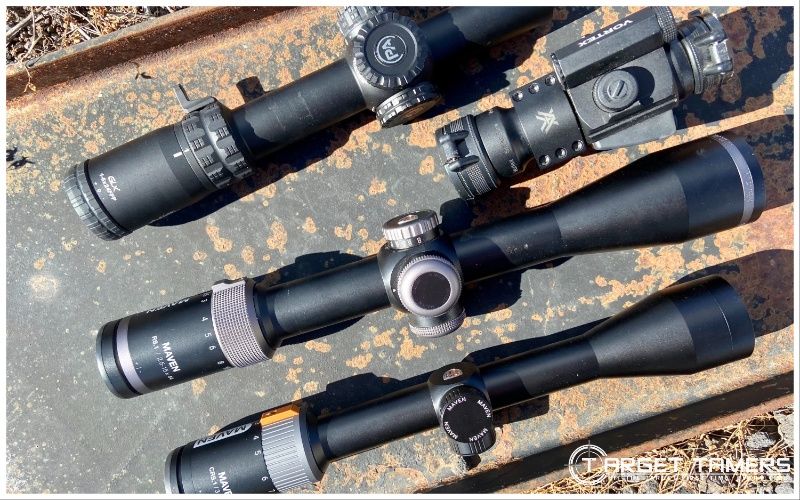
Riflescopes will vary in length and weight with some weighing under 14 oz and as short as 10” and then those that will weigh upwards of 16 oz and are 14” long. If you’re shooting from sticks or bipods, it might not matter when it comes to shooting, but you still have to haul the rifle around.
While most of these scopes are recoilproof for slug guns and heavy kicking centerfire rifles, there are some that will not hold up to the same recoil-resistant standard.
Thermal imaging and some night vision scopes are only recoil rated up to around .308 WIN, so it should hold up to that of a 270. Some cheaper scopes may do fine with a .223 REM but then lose zero or lose lenses with a .270 WIN. Cost can be an indication of a scope’s overall build integrity.
But along with that, a waterproof and fogproof scope is worth everything when in the hunt. Don’t let moisture ruin your sight picture when you finally get a change to tag out.
| Product | Length | Weight | Waterproof | Fogproof |
|---|---|---|---|---|
| Maven RS.1 | 14.05” | 24.5 oz | Yes | Yes – Nitrogen |
| Maven CRS.1 | 12.44” | 14.8 oz | Yes | Yes – Nitrogen |
| Leupold VX-3HD | 12.67” | 13.1 oz | Yes | Yes |
| Vortex Diamondback SFP | 12” | 14.6 oz | Yes | Yes – Argon |
| Burris Fullfield IV | 11.6” | 16.8 oz/18.4 oz | Yes | Yes |
| Bushnell Banner | 12” | 13 oz | No – water-resistant | Yes - Argon |
| Primary Arms GLx LPVO | 10.25” | 21.3 oz | Yes | Yes |
| Vortex Strikefire II | 5.6” | 7.2 oz | Yes | Yes |
| ATN X-Sight 4K Pro | 14.9” | 2.2 lb | Yes | Unknown |
| AGM Rattler TS25-256 | 7.4” | 1.16 lb | Yes | Unknown |
Warranty
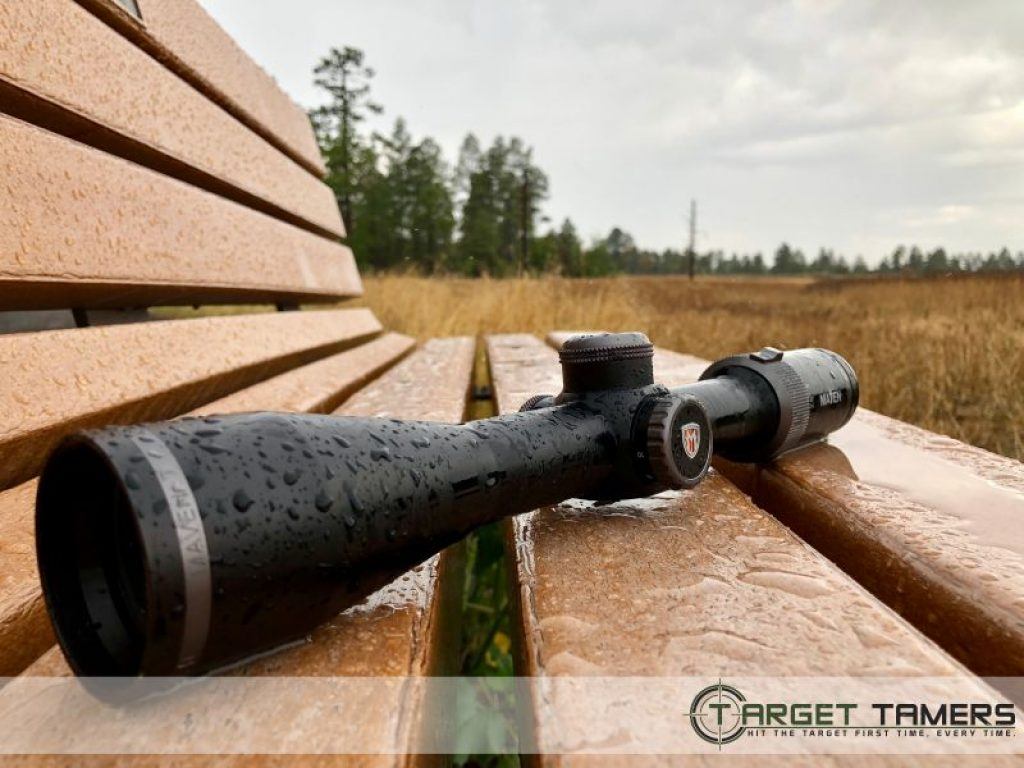
In total, many sports optics manufacturers offer competitive riflescope warranties. The best offer unconditional, lifetime coverage where the warranty follows the scope and not the buyer. This usually means that no registration or proof of purchase is required. It’s covered no matter who owns it.
| Product | Warranty | Warranty Features |
|---|---|---|
| Maven RS.1 | No-Fault Unconditional Lifetime Warranty | Unconditional, lifetime, fully transferable, no receipt needed |
| Maven CRS.1 | No-Fault Unconditional Lifetime Warranty | Unconditional, lifetime, fully transferable, no receipt needed |
| Leupold VX-3HD | Lifetime Guarantee | Unconditional lifetime, fully transferable, no receipt needed, no registration required |
| Vortex Diamondback SFP | VIP Warranty | Unconditional, lifetime, fully transferable, no receipt or registration |
| Burris Fullfield IV | Burris Forever Warranty | Lifetime, fully transferable, no warranty card needed |
| Bushnell Banner | Lifetime Limited Warranty | Lifetime to the original owner, conditions apply |
| Primary Arms GLx LPVO | Lifetime Warranty | Lifetime, fully transferable, no receipt required, normal wear and tear covered |
| Vortex Strikefire II | VIP Warranty | Unconditional, lifetime, fully transferable, no receipt or registration |
| ATN X-Sight 4K Pro | 2-year Warranty | 2 years of coverage, conditions apply |
| AGM Rattler TS25-256 | 3-year Warranty | 3 years of coverage, transferable, conditions apply |
FAQ's
On average, a 100-yard zero is a common hunting sight-in range for the 270. However, with a 200-yard zero, you should be able to conservatively go from 0-250 yards with a duplex reticle. Depending on your loads, you can probably stretch that to about 300 yards and still stay in the kill zone.
Though running numbers through a ballistic calculator is one thing, confirming your drop for your 270 loads at the range is another.
Overall, the 270 WIN cartridge is highly effective from about 0-400 yards. The threshold that sets this max range is based off the 1,500-fps velocity needed to ethically take elk and that’s around 400 yards.
Different bullets, grain weight, muzzle velocity, etc. will produce different ballistics. For example, with a 100-yard zero, a 130g, 3,060 fps, .440 G1 BC (ballistic coefficient) load doesn’t fall to 1,504 fps until 850 yards while a 150g, 2,830 fps, .261 G1 BC load bottoms out to 1,508 fps at 440 yards. However, I’ll always opt for the second load for an elk hunt up to about 250 yards with a duplex reticle scope. The first load, well that will be good for practicing long-range with the 270 on paper!
There is discussion about 1000, 1200, or 1300 fps being the absolute minimum for elk, but I think bullet placement is the primary factor to consider before we start getting into debates about bullet diameter, energy, expansion, and the like.
In general, a red dot can absolutely be mounted to a hunting rifle. It has unlimited eye relief, usually a low-profile mount is included in the box, and it's excellent for inside 100 yards. Some red dots have BDC reticles, are just as waterproof as scopes, and can be used for some hunting.
Red dots can be used for hog, coyote, whitetail, and dangerous game hunting. You can mount a red dot to a flat-top, bolt action, or lever action rifle and shot guns. In total, it’s about mounting the right tool for the task.
For the effective hunting ranges of the .270 WIN, you don’t need an excess of magnification. I personally like 3x power for every 100 yards, and so a 3-12x scope would suit my purposes well. However, the terrain and your vision may demand more consideration.
For thick and obstructed terrain like in the timber, low power will serve well, so 1-6x or 1-8x, 2-7x, 2.5-10x, etc. For mountain brush where you can go from a 40-yard shot to 200 yards or so, 2.5-10x, 3.5-10x, 3-9x, and 3-12x are great configurations to consider. For between 100-400 yards, I’d say to look at the 2.5-15x, 3-12x and 4-16x scopes .
In total, the best cheap scopes for a 270 bolt action rifle are the Bushnell Banner 3-9x40, Burris Fullfield IV 2.5-10x42, Vortex Diamondback SFP 4-12x40, and the Maven CRS.1 3-12x40. These riflescopes are under $500 and would make excellent sighting systems for the 270.
High Quality Scopes for the High Intensity .270 Win Caliber!
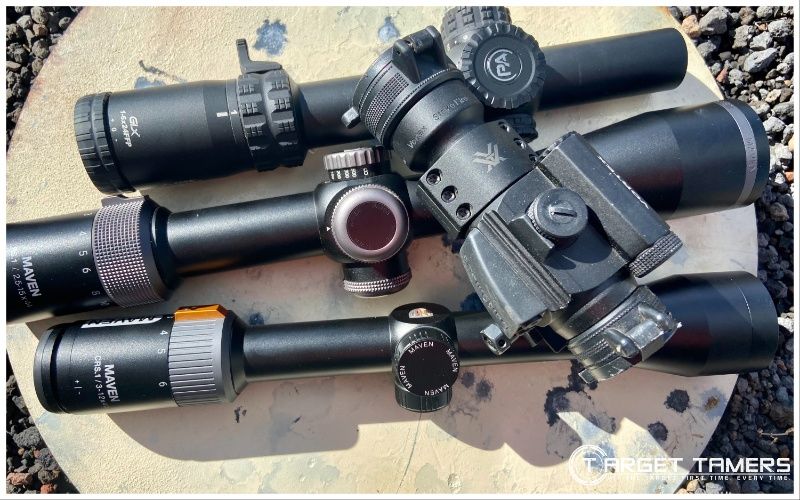
Overall, there are many scopes that will perform more than adequately on a rifle chambered for the .270 WIN load. Though you can do almost anything with this flat-shooting cartridge, it’s most often used for hunting. A straightforward, clear, and dependable hunting scope is all that's needed.
Bright, sharp and clear glass, an uncluttered FOV, fog and waterproof build, and repeatability, are essential. If there’s a special feature I value, it’s illumination. Other than that, the rest is up to personal preference.
What’s my go-to scope for my .270? It’s the Maven RS.1 with the Maven CRS.1 as a second. What can I say? The glass, simple reticles, build quality, and accurate tracking do it for me!
Further Reading



